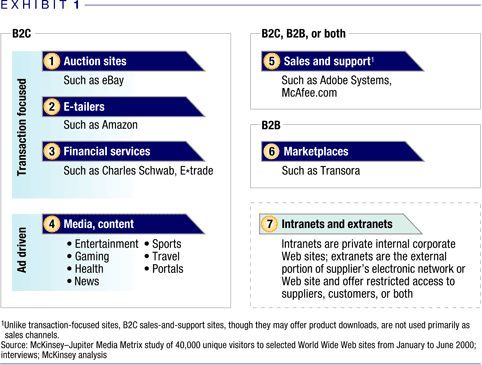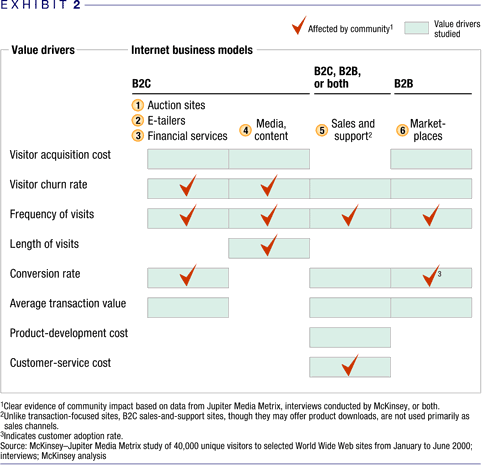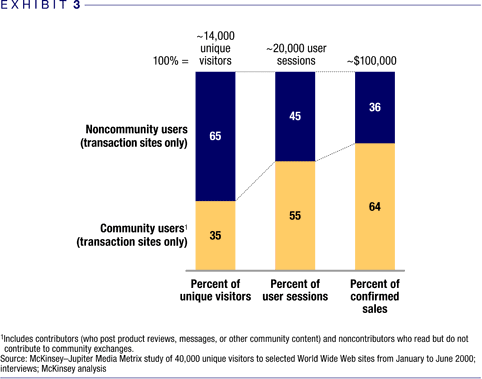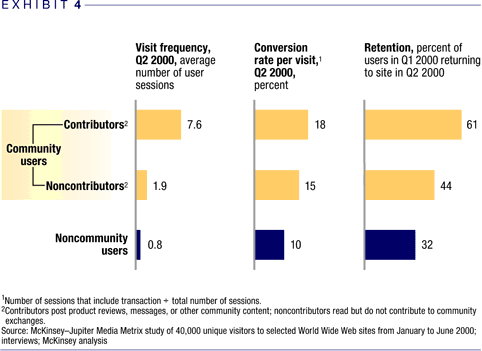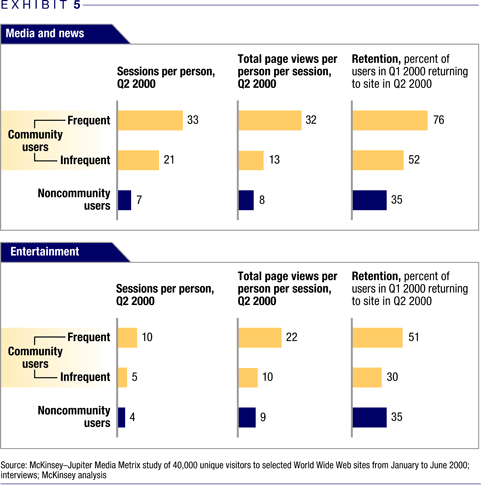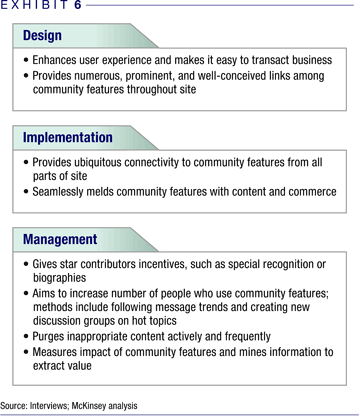|
| |

|

Users of the community features of World Wide Web sites really are more valuable than nonusers. |
|
Shona L. Brown, Andrew Tilton, and Dennis M. Woodside Many myths have been laid to rest since the Internet bubble burst, but a cherished if previously untested principle—the idea that an on-line community can increase the "stickiness" of a World Wide Web site and the value of users to it—is proving true. A McKinsey–Jupiter Media Metrix study1 of visits to World Wide Web sites by 40,000 consumers shows that chat rooms, bulletin boards, product review pages, and similar community features create substantial value for both retail and content sites. What does "substantial" mean? Consider this: users of community features at the Web sites we studied generate two-thirds of their sales despite accounting for only one-third of their visitors. Users who contribute product reviews or post messages visit these sites nine times as often as nonusers do, remain twice as loyal—and buy almost twice as often. Even users who read but don’t contribute to community exchanges are more frequent visitors and buyers. Web sites of every kind are under pressure to show profits, so these findings suggest an important—and largely untapped—opportunity. Only one of the top ten apparel sites, for instance, and two of the top ten general merchandisers now offer community features. The seven e-business models To identify the ways community features could affect the financial performance of on-line businesses, we divided them between two categories—business to consumer (B2C) and business to business (B2B)—and identified seven broad business models, chosen on the basis of interviews with industry experts and managers of e-businesses, as well as the available data.
How community features build value We then identified the relevant value drivers for each model and studied the impact of community features on 17 major consumer sites. Our analysis of B2C sites provided direct evidence for an on-line community’s impact on four of the six value drivers studied—and, in particular, for three of the five drivers of transaction sites and three of the four drivers of content sites.
One-third of all users but two-thirds of sales Users of community features represent about one-third of all visitors to the leading e-tailing sites studied but generate two-thirds of their sales.
Users of community features are twice as loyal We found that the more a person uses the community features of a site, the more that person tends to visit it and to make purchases there. Users who contribute product reviews or post messages visit sites more than nine times as often as nonusers do, remain twice as loyal—and buy almost twice as often. Even users who read community exchanges but don’t contribute to them are more frequent visitors and buyers.
How community features enhance content sites For both news sites (CNET.com, CNN. com, Weather.com) and entertainment sites (Discovery.com, ESPN.com), community features boost performance on several key metrics. Users of community features visit sites more often than nonusers do, as well as spend more time, view more pages, and remain more loyal. As a result, sites can sell subscription services, offer advertisers a more targeted audience, and mine valuable market data
What the best sites do What constitutes best on-line practice? According to industry experts and our own analysis, top-performing sites excel in three key areas.
| |
|
| |
